Hilo and The Volcano National Park
June 26, 2018
| We traveled by night from Kahului, Maui to Hilo, Hawaii. During our breakfast at about 7:50am, I got to watch the tugs in action, which I always like. |
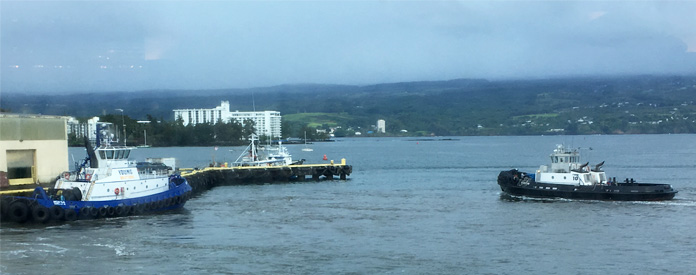 |
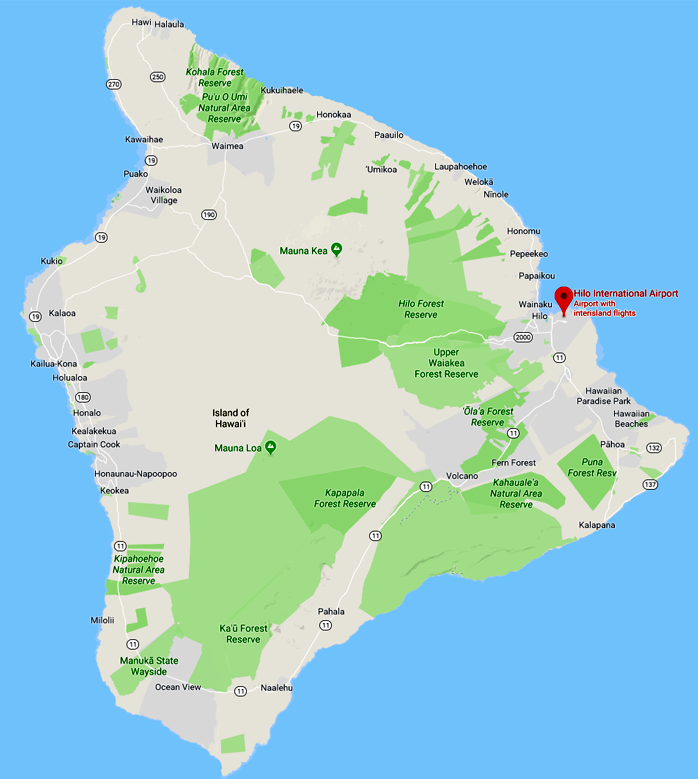 | We had a smooth transition to the Hilo Airport to pick up our rental car from Budget. Their van picked us up at the ship and a very friendly and helpful lady gave us information about Hilo. Then we headed out of Hilo on Highway 11, headed for the Volcano National Park. |
When we reached the stretch of road that went by Volcano National Park around 10:30am, it was a smooth, mostly straight road that in gentle undulattions climbed to about 5000 feet and then came down the same way.  |
 |
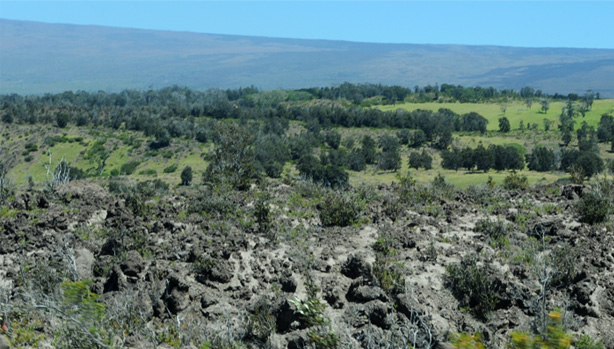 | We were going over a 5000 ft shoulder of Mauna Loa, and were within 10 miles of actively erupting fissures, but we saw little unusual. This was typical terrain, with lots of rough lava surface that you could see at spots in the land. And as we approached the entrance to the Volcano National Park, there were signs warning of cracks in the road. We saw several small cracks, and a couple of places where cracks had been filled, but only an inch or so across. |
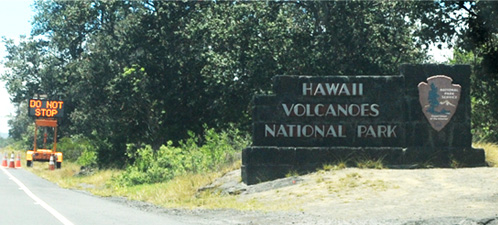 |
|
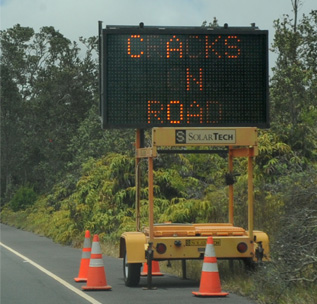 |
| These are the signs we encountered in the vicinity of Hawaii Volcanoes National Park. The "Do Not Stop" sign applied to a 12 mile stretch of Highway 11 including the entrance to the park. We had seen a web posting the previous day suggesting that the Volcano National Park Headquarters was open and we had hoped to go there and ask questions, but it was not to be. |
Of course we could come up with lots of other texts for signs:
Hawaii Volcano Park closed on account of volcano!
Volcano Park is open only in the absence of volcanic activity.
but they didn't ask us.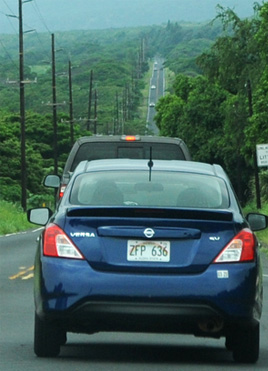 |
|

 You would have to say that this is a black beach. The sand, stones and larger rock outcroppings are all black! You would have to say that this is a black beach. The sand, stones and larger rock outcroppings are all black!
The reddish soil that they are walking on above in approaching the beach looks like they must have trucked in a load of Georgia red clay. The Punaloo wiki says that the sand is little bits of volcanic basalt and that it's nature comes from the fact that the lava "explodes" as it hits the ocean. It had a unique sound when I poured it out of my shoes that evening into the trash can - more like tiny gravel than sand. | 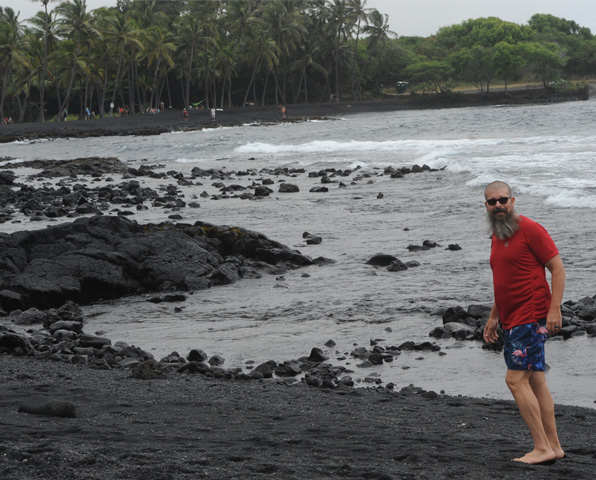 |
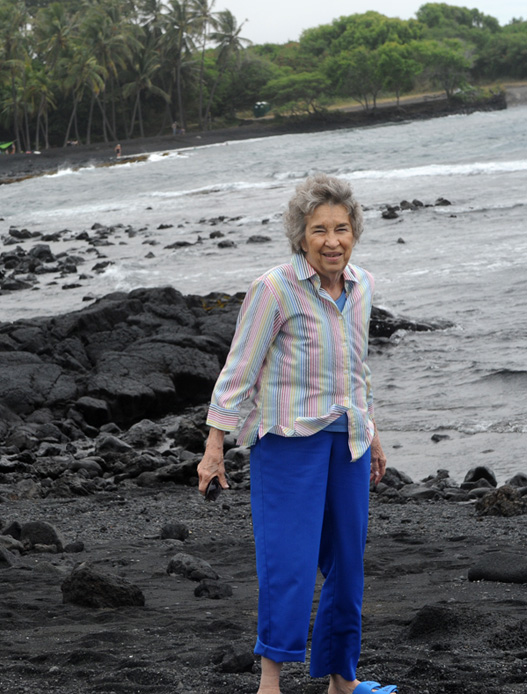 |  Brenda on Punaloo Beach, called a black sand beach for reasons clearly seen behind her. Even the heap of lava that she is standing on below is from a previous eruption of Kiluaea and is black as soot. We read that there are many fresh water springs under the water here, making it colder than normal surf, and that the top layer of water is mostly fresh water because it has lower density than salt water. |
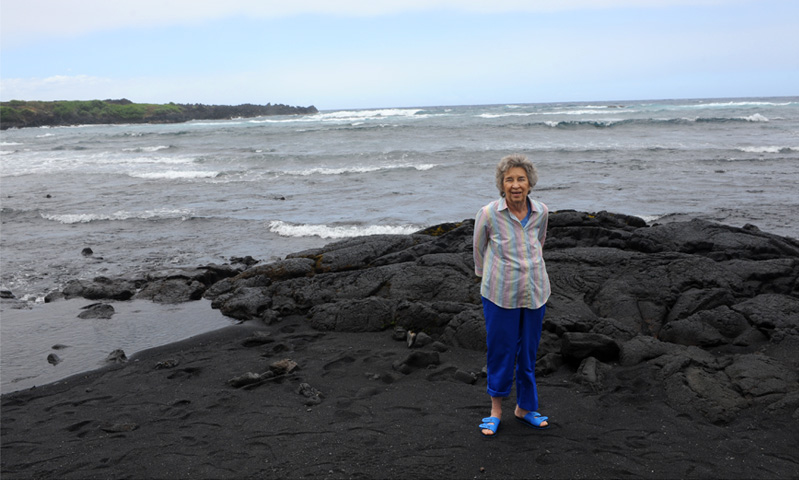
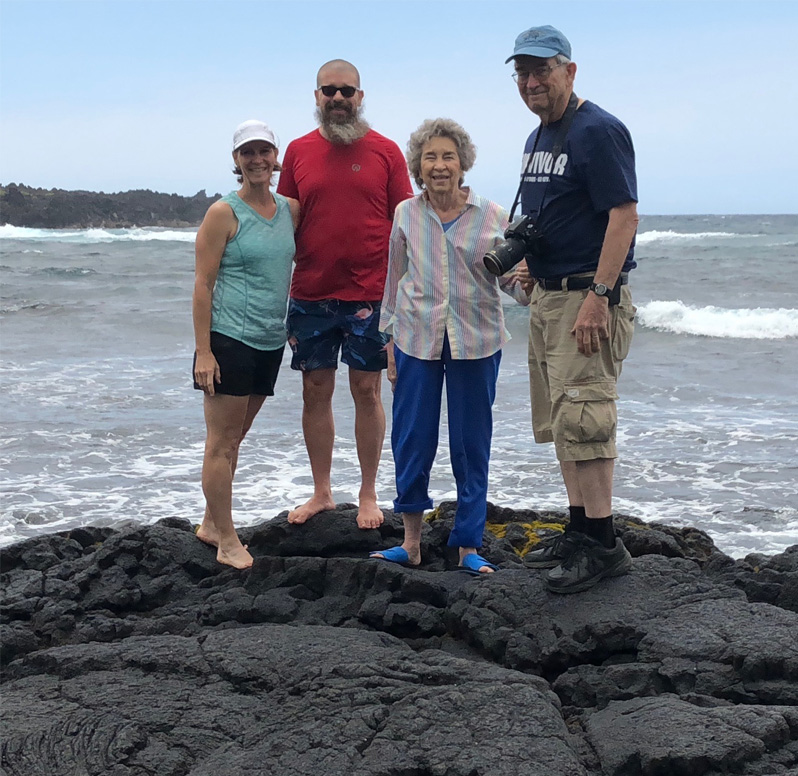
Darla, Jeff, Brenda and Rod on a ledge of lava. A friendly co-explorer took this photo with Darla's phone.
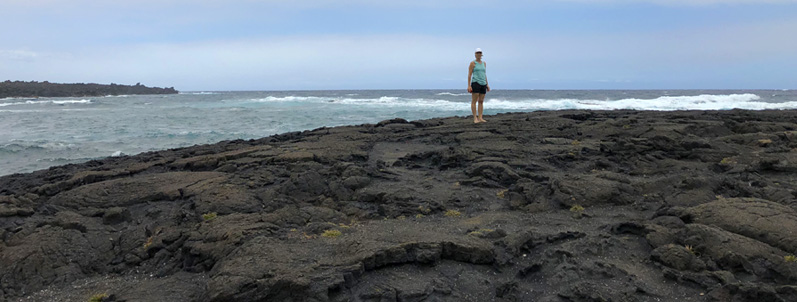
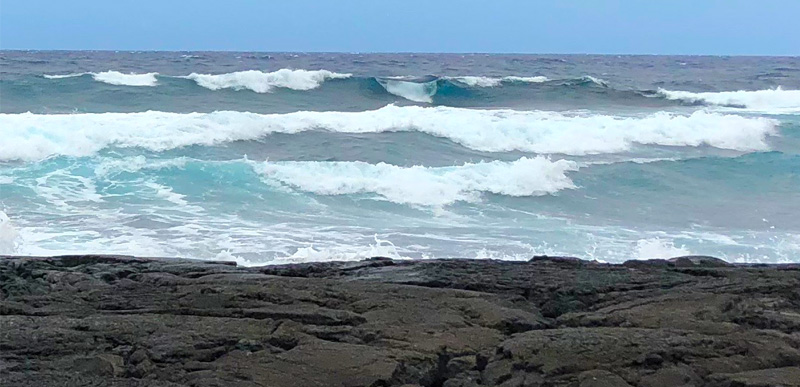
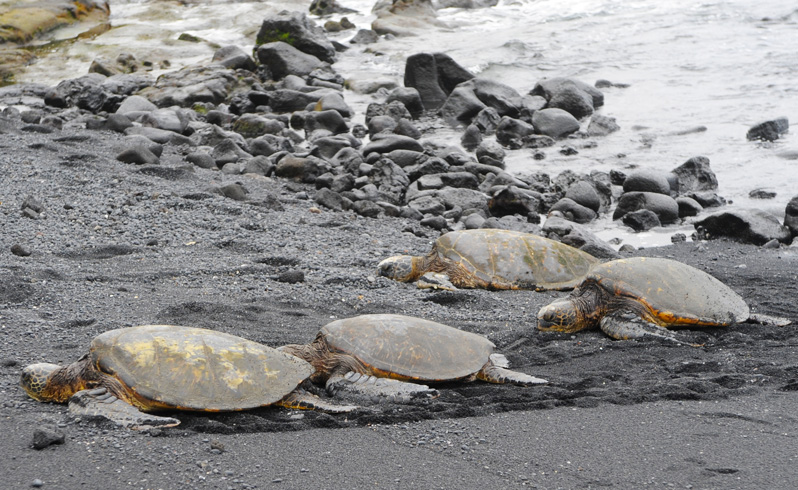
| We were pleased to get to see these four large sea turtles that had crawled up on the beach. The turtles seemed to be mostly asleep, but later these two moved up about a body length and had their eyes open. |  |
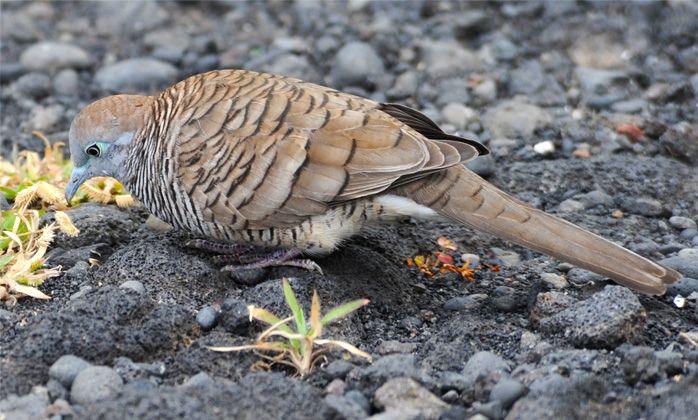 |
I'm always loving the wildlife and enjoyed this dove. |

 |
We walked through a palm forest in this natural beach setting. |

| The turtle seemed to be sleeping peacefully, but she had gathered a crowd of watchers. The lifegaurds drew lines in the sand 30ft from the turtles to try to protect them from disturbance. One Punaloo site describes this as the most famous black sand beach of Hawaii. It says that endangered green turtles bask in the sun there and that you can sometimes see the rarer Hawksbill turtles. The Hawaiian name for the green turtles is "honu". Sleep on, big honu! |
|

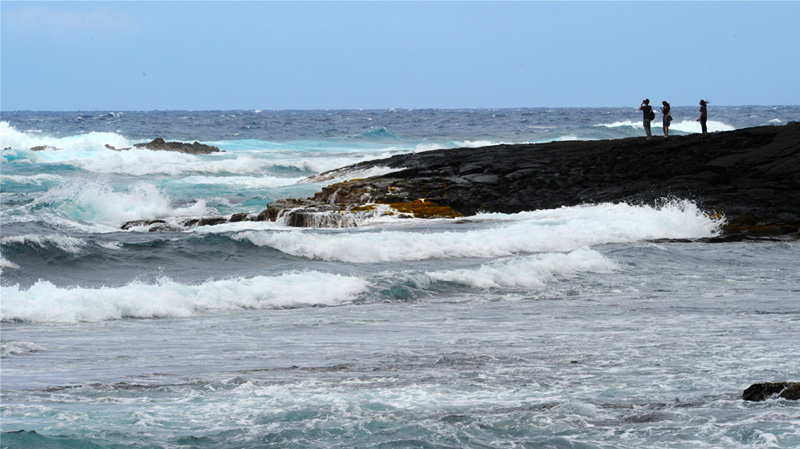
 |
 |
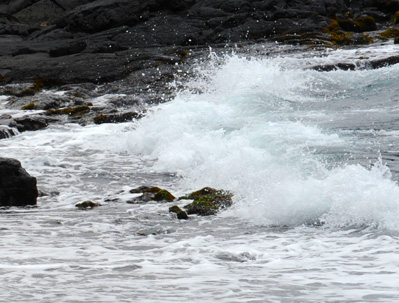 |
 |
| I don't believe Jeff is bothering this turtle. It looks about as relaxed as you can get for a 200 lb sea creature lying on the sand when the sea is its natural environment. |
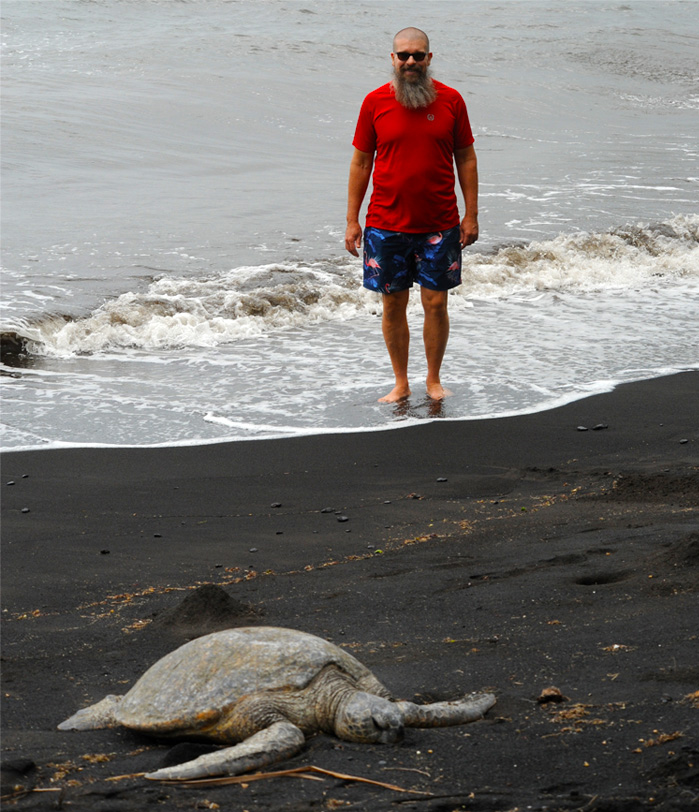 |
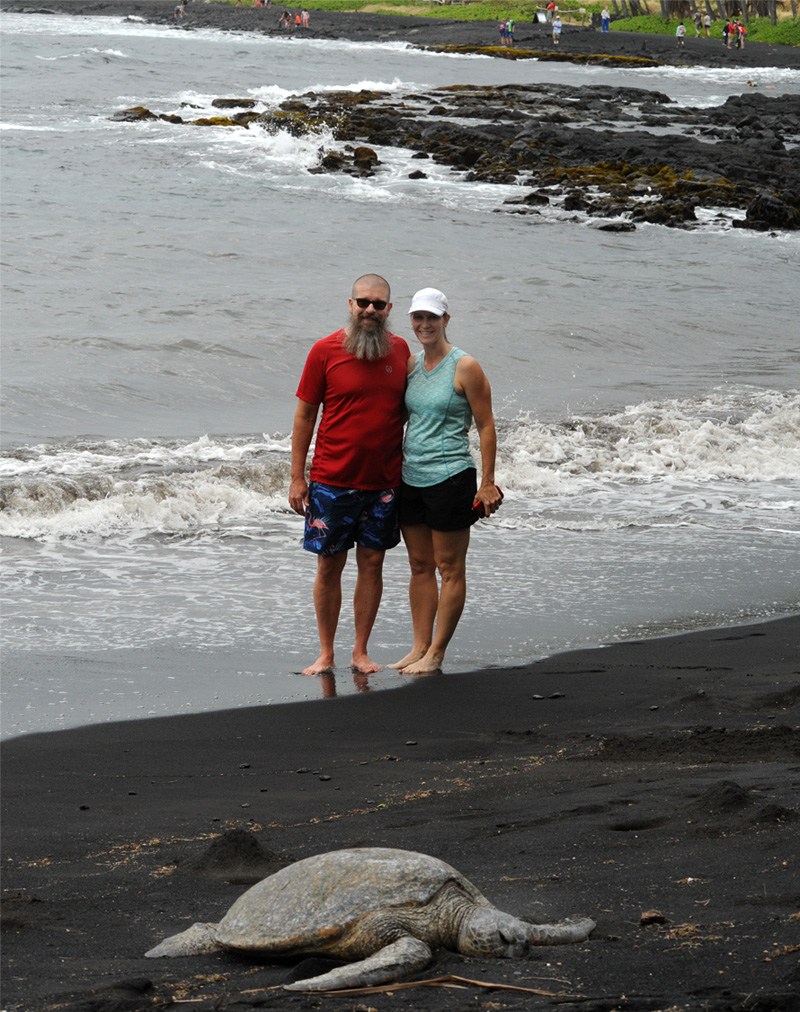
 |
We probably had people from all over the world on the beach with us, but I'd guess that this is a local boy. He and his brother repeatedly challenged the waves with their boards, and there were several family members with them. He looks like a good candidate for surfing Wakiki one day, or maybe even the north shore of Oahu. |
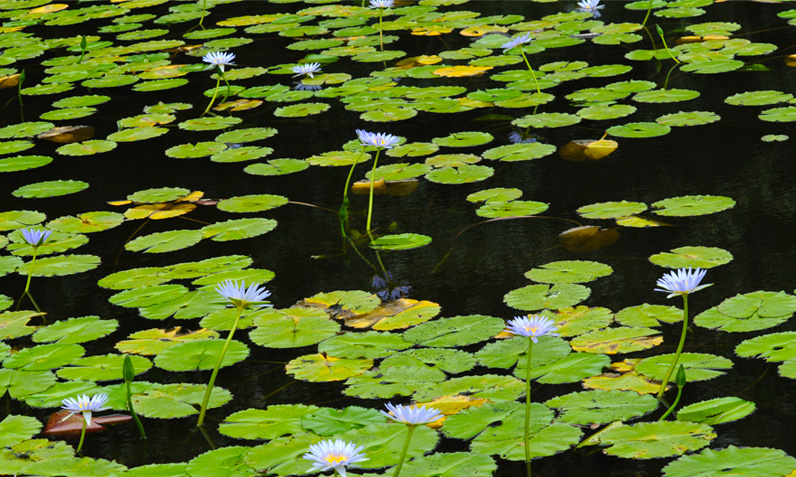
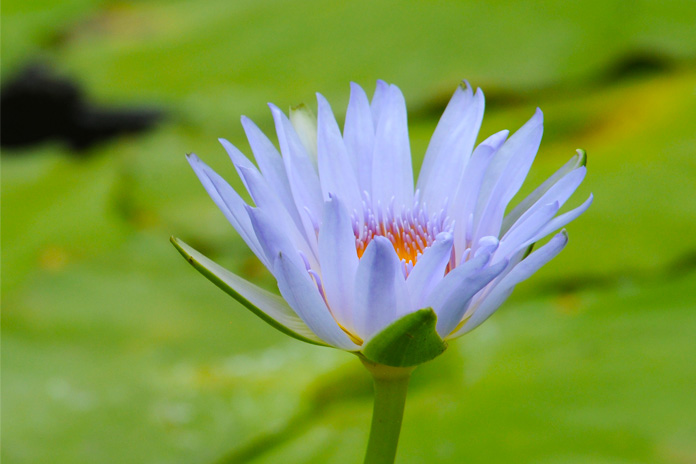 |
I expected palm trees, black sand, and even turtles, but I had no idea there would be a beautiful lily pond nestled among the palm trees! This is more like what we find at Gibbs Gardens. |
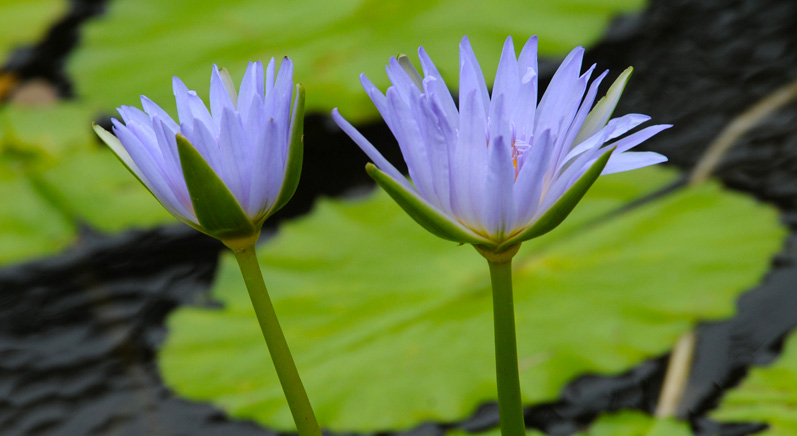
 |
Wandering over by the parking area, I was surprised by this brilliant yellow bird! Web photos identify it as a Saffron finch, introduced from the Amazon basin in South America. |

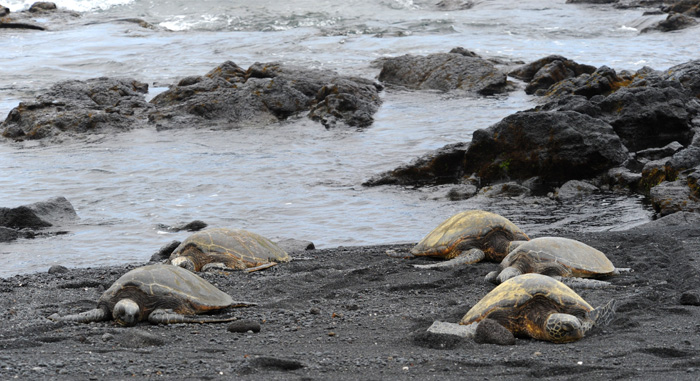 |
It had been a great privilege to experience the nesting ground of these large turtles. |
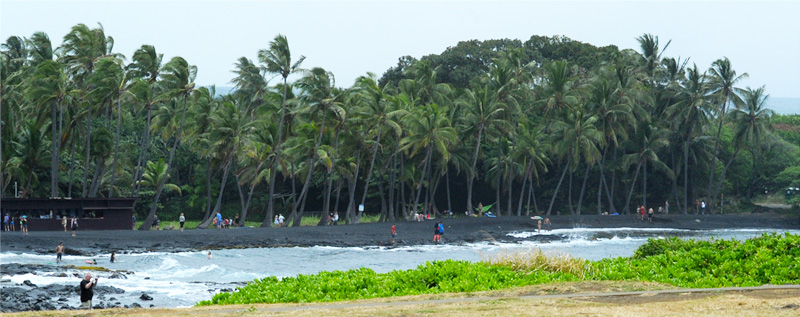
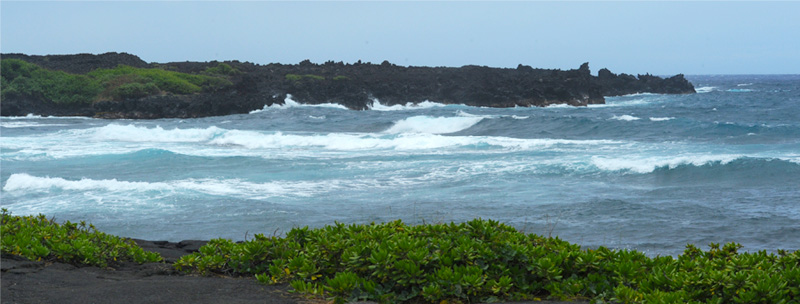
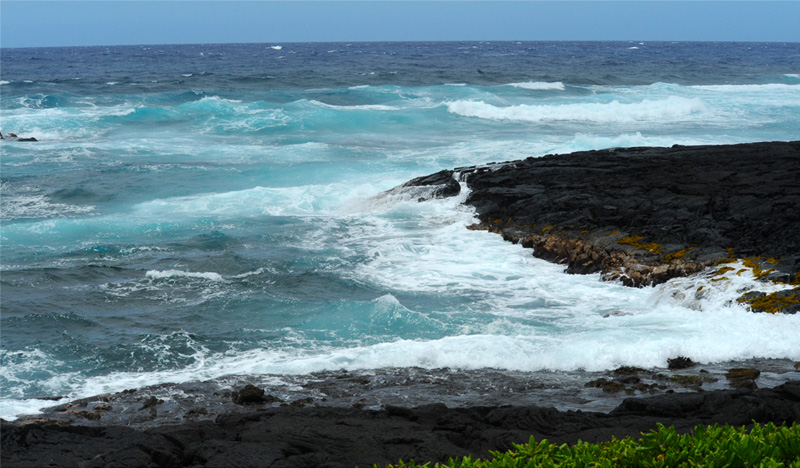
| Akaka Falls |
2018
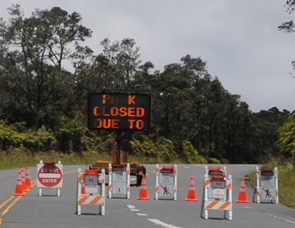



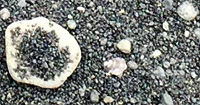
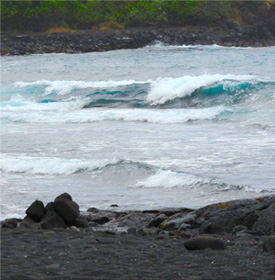 The sight and sound of these waves on this black beach on the south end of the island of Hawaii were very pleasant and inspiring.
The sight and sound of these waves on this black beach on the south end of the island of Hawaii were very pleasant and inspiring.